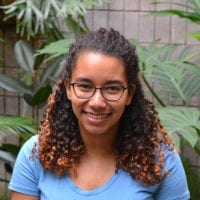
“Examining characteristics of artichoke mutant phenotype in Physcomitrella patens”
Project Summary:
In the flowering plant Arabidopsis, mutations in members of the ERECTA gene family confer a smaller size and straighter stature in comparison to the wild-type plants. In Physcomitrella patens, the artichoke mutant is suspected to be caused by loss of ERECTA-Like gene function. Artichoke has a distinct phenotype, similar to the Arabidopsis erecta mutant; the mutant moss has shorter shoots and smaller “leaves” that the wild-type. This research aimed to determine the characteristics of the artichoke mutant in order to better understand how the mutation alters the overall structure of the moss. We used laser confocal microscopy to image wild-type and artichoke mutant moss shoots and leaves, followed by image segmentation using MorphoGraphX to obtain qualitative data of ell size and shape and characterized a few abnormalities. n addition to the shorter stature and smaller leaves, artichoke leaves often possessed split midribs, and the shoots possessed an overabundance of branching buds. Then, the areas and aspect ratio of artichoke and the wild-type were compared to determine how the cells themselves were affected by the mutation, in which artichoke was found to have both a smaller average cell area and aspect ratio. Studying plant size and architecture is particularly important, as the research can be connected to crop development, where there is major demand. By studying plant growth in the moss, Physcomitrella patens, we are able to use an organism that is easy to study in a lab o better understand a critical developmental pathway conserved in all land plants.
My Experience:
Over the duration of my internship at the Boyce Thompson Institute, I learned a great deal about working in a lab. Here, I had the opportunity to read research papers with my lab every week and discuss the content to gain a larger understanding of research endeavors outside of my lab environment. In addition, I was trained to use an autoclave, to use a confocal microscope and to analyze data. I am confident that I will be able to use the many techniques I acquired at Boyce Thompson, along with the professional skills I developed, to aid me as I continue onto graduate school and to my career in bioengineering. I am very grateful for my experience at BTI and to the people who I was able to work among over the past ten weeks.
